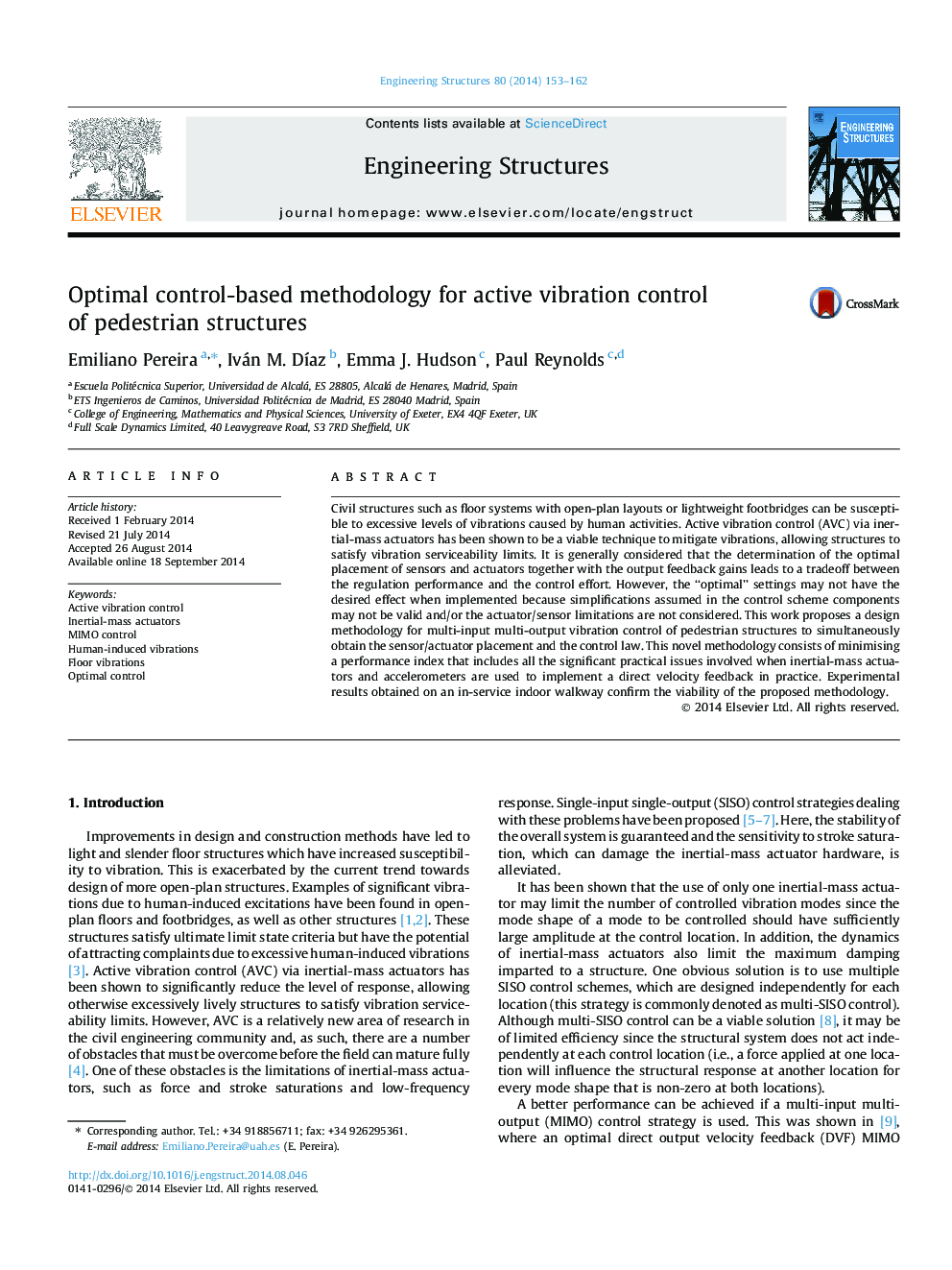| Article ID | Journal | Published Year | Pages | File Type |
|---|---|---|---|---|
| 266359 | Engineering Structures | 2014 | 10 Pages |
•A novel optimal design methodology for human active vibration control is proposed.•Practical issues involved with inertial-mass actuators and accelerometers are considered.•A direct velocity feedback with two inertial-mass actuators is implemented in practice.•Experimental results obtained on an in-service structure confirm the viability of methodology.•It was observed that MIMO control improved the results compared with SISO.
Civil structures such as floor systems with open-plan layouts or lightweight footbridges can be susceptible to excessive levels of vibrations caused by human activities. Active vibration control (AVC) via inertial-mass actuators has been shown to be a viable technique to mitigate vibrations, allowing structures to satisfy vibration serviceability limits. It is generally considered that the determination of the optimal placement of sensors and actuators together with the output feedback gains leads to a tradeoff between the regulation performance and the control effort. However, the “optimal” settings may not have the desired effect when implemented because simplifications assumed in the control scheme components may not be valid and/or the actuator/sensor limitations are not considered. This work proposes a design methodology for multi-input multi-output vibration control of pedestrian structures to simultaneously obtain the sensor/actuator placement and the control law. This novel methodology consists of minimising a performance index that includes all the significant practical issues involved when inertial-mass actuators and accelerometers are used to implement a direct velocity feedback in practice. Experimental results obtained on an in-service indoor walkway confirm the viability of the proposed methodology.
